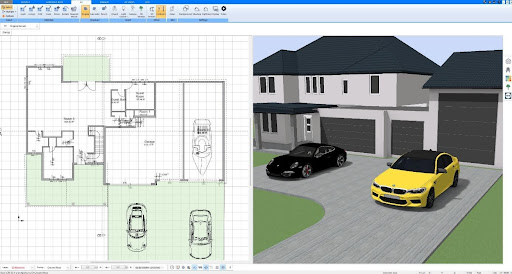Despite their compact size, mini diggers are incredibly powerful machines. Whether you’re a professional contractor tackling complex sites or a serious homeowner handling a large residential project, these machines offer unparalleled maneuverability.
Another charm of a mini digger is its ability to transform. With the right attachments, your mini digger transforms from a basic excavator into a multipurpose equipment that can handle a range of jobs. Let’s look at digger attachments that can help you get the most out of your tiny digger.
Table of Contents
I. Foundational Attachments
Every mini digger comes equipped with the hardware to dig, but maximizing efficiency starts with using the correct ground-engaging tool. The bucket is the starting point, though this single category branches into critical specialized roles. The following are the different types of buckets:
- Standard Digging Bucket: It is the general-purpose choice because of its convenient design for everyday use in excavation. It can also be handy for digging foundations and loading loose materials like soil and gravel.
- Trenching Bucket: This attachment is commonly used for utility work. With its built-in narrow design, it creates clean and precise trenching for laying irrigation lines, electrical cables, and drainage pipes while minimizing soil disturbance, which makes backfilling a lot easier.
- Grading Buckets: This tool is wide, shallow, and typically features a smooth, sharp edge without teeth, making it crucial for final finish work, such as leveling soil, spreading gravel, shaping delicate slopes, and cleaning out existing ditches to ensure proper water flow.

When the ground resists from a stubborn concrete or rock, a specialized force is needed.The mini digger breaker is a compact powerhouse built for demolition. This tool is mandatory for breaking up concrete slabs, asphalt driveways, boulders, and reinforced foundations in tight urban or residential areas where larger demolition methods are impractical.
If the problem is highly compacted soil, frost, shale, or tough tree roots, a different approach is better. First, the abrasive material should be broken up and penetrated using a ripper attachment. Using a ripper lowers the danger of damage and maintenance expenses by easing the strain on both the tiny digger and your regular digging buckets.
II. Advanced Attachments
Beyond simple digging and breaking, an advanced attachment turns the mini digger into precision work and complex material handling. The following are the advanced attachments:
- Auger Attachment: This equipment is utilized for operations like placing fence posts, deck footings, signposting, or huge saplings that call for fast, precisely straight, deep hole drilling. It features drill bits of varying diameters and sorts for different kinds of soil, including ones that can break through hard clay and rock.
- Hydraulic Thumb: Because it functions similarly to an opposable finger, the hydraulic thumb is mostly employed in material handling to grasp and secure irregularly shaped materials, such as huge rocks, trees, logs, and garbage. Its function is useful for forestry and site cleanup.
- Sorting Grapple: This tool offers more control for tasks requiring careful sorting or mixed garbage. With two or more hydraulic jaws, this claw-like tool is ideal for handling and stacking objects precisely or for sorting scrap metal from soil.
- Tiltrotator: This machine, which is placed between the arm and the attachment, is so versatile that it can tilt 45 degrees in each direction and spin 360 degrees indefinitely. With this amount of adaptability, you can perform complex jobs like leveling a challenging corner, excavating precise curves, or designing intricate drainage slopes without constantly moving the entire machine.
III. Operational Efficiency
The power of these attachments is only realized if they can be changed efficiently. The current rapid coupler mechanism proves useful in this situation. With a quick coupler, also known as a quick hitch, you can quickly connect and release attachments. Although some manual interaction is still necessary for mechanical variants, the quick hitch saves the most time.
This technique uses a simple switch within the cockpit to change attachments without ever leaving the cab. This functionality is especially helpful for projects that need to quickly move from a digging bucket to a breaker and back to a grading bucket in order to preserve workflow and reduce expensive downtime.
Pro Tip: Always Double-Check the Hitch While hydraulic quick couplers are fast and convenient, always get out of the cab after locking in a new attachment to give the connection a firm tug or wiggle. This final physical check ensures the attachment pins are fully seated and locked, preventing dangerous and expensive failures during operation.
IV. Maintenance
Thorough maintenance is essential to guarantee that the substantial investment in a mini digger and its accessories is worthwhile. By inspecting it daily, you can ensure that it prolongs the life of the equipment and prevents malfunctions. The important part you have to inspect is the bushings, pins, and welds for excessive wear or cracks before operating.
You should also search for any missing bucket teeth or thinning cutting edges. Using a defective or worn-out tool might cause machine damage. The least expensive type of insurance is lubrication (greasing). Pins and bushings at the joints need to be greased on a regular basis to avoid metal-on-metal friction and failure.

A thorough inspection of all hoses and connections is essential for hydraulic attachments. To avoid contaminating the machine’s main hydraulic system, check it for wear, cracks, or leaks, and make sure the hydraulic connections are clear of debris. Lastly, it is essential to practice quick fixes, such as small cracks in buckets or attachments.
Making quick fixes is inexpensive and simple to repair, but if ignored, they can develop into catastrophic failures under load, resulting in project delays and much higher repair expenses. Your compact mini digger will continuously surpass expectations if you stick to this plan of employing the appropriate specialized tool and taking good care of it. It will prove to be the most useful and adaptable tool on any task site.
Conclusion
When you incorporate a mini digger attachment, it is recommended that you maximize its use to see its true worth. You can significantly shorten schedules and cut labor costs by utilizing the auger’s accuracy for flawless post holes, the hydraulic breaker’s force for concrete destruction, and the hydraulic thumb’s control for debris removal.
The mini digger becomes the most important tool on any construction site when combined with the effectiveness of hydraulic quick couplers, which allow it to move between tasks with ease in only a few minutes. The tiny digger’s compact size ultimately conceals its capacity, providing remarkable strength and adaptability where it is most needed in the confined areas of today’s landscaping and building projects.





